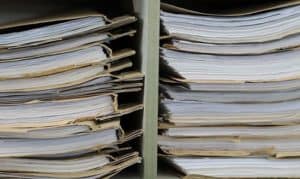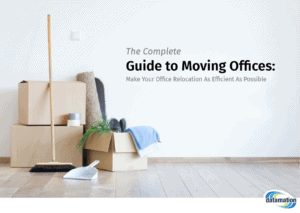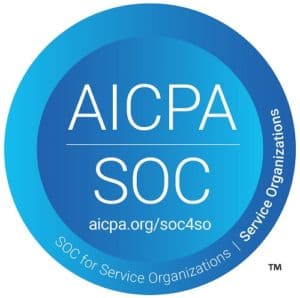There are dozens of things to think about once you decide to move offices: furniture, color scheme, the impact on employees…dozens of things that need to be thought of and planned for when you relocate. As much as we hate to do it, let us add one more thing to your plate: document management plan. Not only does the information on your paper files need to go with you to your new office, but ideally it should also be accessible during the relocation process.
Moving is the perfect time to fully think about your current document management and how you can streamline it going forward. Consider these six things while deciding what’s going to be best for your organization.
1. Do you have a complete understanding of your current document situation?
 Before making any improvements, you’re going to need to have a full understanding of your current documents. Take an inventory of all your current business documents. Make sure that you touch base with all departments within your company as there are operational documents, HR files, accounts payable, tax documents, invoices, security logs, etc. and you want to have everything accounted for.
Before making any improvements, you’re going to need to have a full understanding of your current documents. Take an inventory of all your current business documents. Make sure that you touch base with all departments within your company as there are operational documents, HR files, accounts payable, tax documents, invoices, security logs, etc. and you want to have everything accounted for.
Once you’ve spoken with the different departments in your office, create a master list of your documents and their current location. Don’t worry if you don’t have specifics – even a generalized list of types will be a huge help in future planning.
2. How are your documents organized?
You can research the answer to this question either during or after you ask about the different documents being stored in your office. But basically, you should have a sense of what everyone is doing with their documents. Has each department come up with their own unique filing system? Is everything stored in a central location? Is there a consistent process for how paperwork is managed?
Ask the employees who work with the documents what they think about the current process. Is it easy to find what they need? Is there anything they would like to change?
3. Are all the documents you have necessary?
 This isn’t always the easiest question to answer. Some documents have specified retention periods due to local and federal laws or compliance guidelines. In addition to that, it’s likely that your organization has created some of their own retention rules.
This isn’t always the easiest question to answer. Some documents have specified retention periods due to local and federal laws or compliance guidelines. In addition to that, it’s likely that your organization has created some of their own retention rules.
However, it’s also possible that because retention guidelines can be intricate and confusing, someone somewhere along the line just decided that you’re going to keep everything. And while that may seem great for potential audits, that’s not so great for your storage space.
This is a good time to review and enforce document retention guidelines so you’re not spending the money to transfer paper that you don’t need. This is also the time to consider if you rather digitize your paper, microfilm, and/or oversized documents. No matter what, it’s going to be great to start over in your new space with a streamlined document management approach.
4. How much space do you want to devote to physical document storage in your new office?
This goes along with point three, but sometimes it’s easy to underestimate how much room those boxes and filing cabinets are going to take up. Being strict with your retention guidelines will help, but not eliminate, your paper files.
Estimate how much paper you accumulate in a six-month period and multiply based on the appropriate retention period. Will you have the room for that paper? Can you visualize where your storage will be in the new office?
Again, you may want to consider digitizing your files. This allows you to bring all of your information over to the new office but without the paper. Then to keep paper files under control, you can convert some paper forms to electronic and/or purchase a scanner to convert files yourself.
5. How sensitive/critical are your documents? Do you have any compliance issues?
 When you’re planning your move, you’ll want to make sure that you have access to important files that you could need at a moment’s notice. Consider this as you’re boxing up files for the move.
When you’re planning your move, you’ll want to make sure that you have access to important files that you could need at a moment’s notice. Consider this as you’re boxing up files for the move.
Even more important, make sure that you make physical or digital copies of anything you’ll absolutely need when you move. Even with the best office relocation plan, accidents happen and documents can go missing. This can be a disaster for your clients or a potential audit.
Consider having an electronic backup of all, or at least of your in-use files, so that you have access if something happens to your paper copies.
6. How much of your resources can you commit to maintaining your paper files?
Even once you understand the current state of your documents and smooth out any compliance risks, you still need to think about if the resources dedicated to paper records is worth it. If you’re thinking about moving all of your records, it’s going to require a bunch of space in the new office and personnel to sort, assess, refile, unpack, and repack the files.
Just think about what you can use that space for and what better tasks your employees could be doing.
Once you think through these six points you’ll be well on your way to streamlining how your business handles records.
For more on relocating offices, including a printable checklist, download our free guide!
Have any questions about a document management plan? Want to give us feedback on this post? Reach out to us on Twitter or LinkedIn!
This post is part of the Datamation Guide to Office Relocation.



